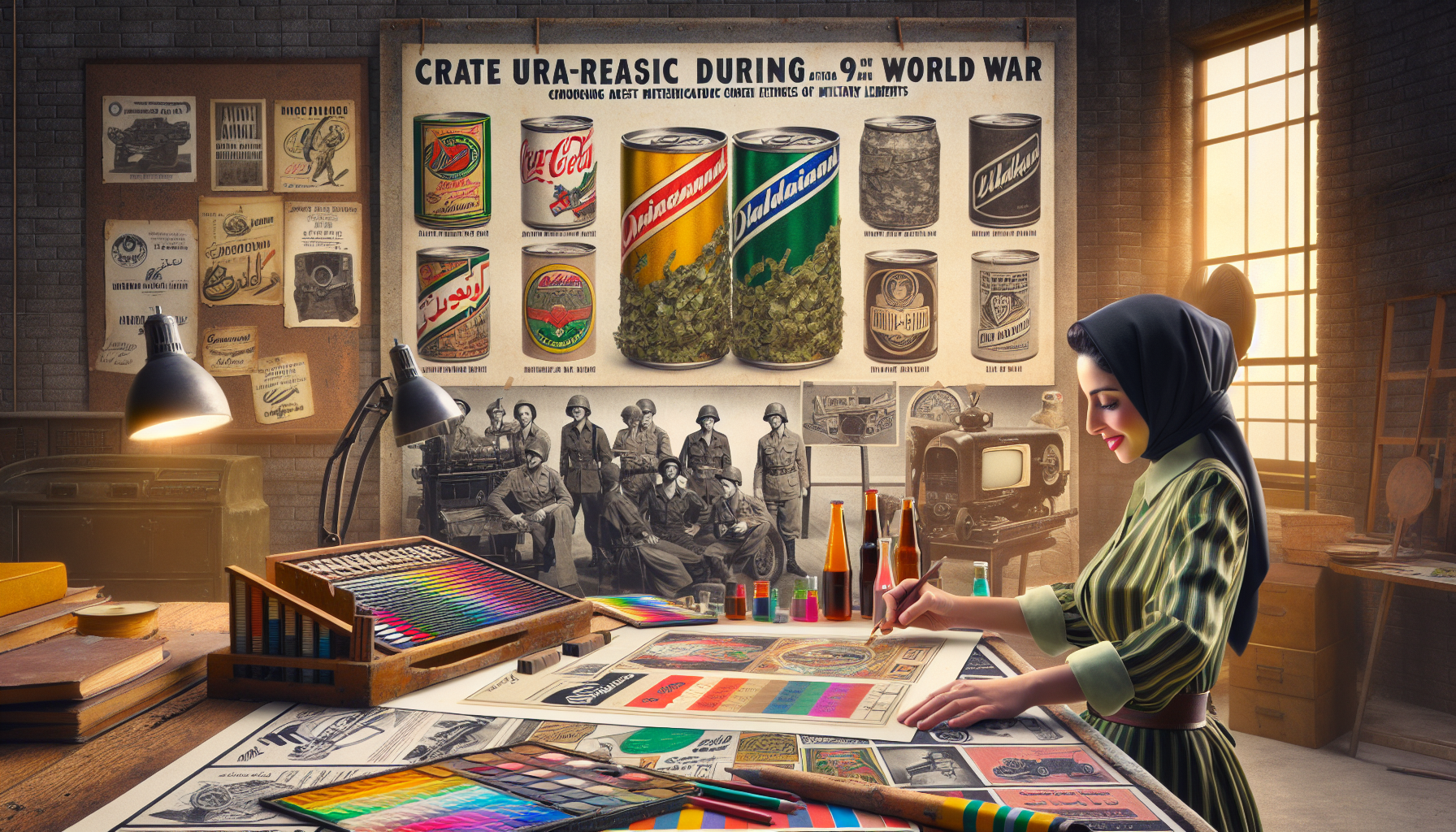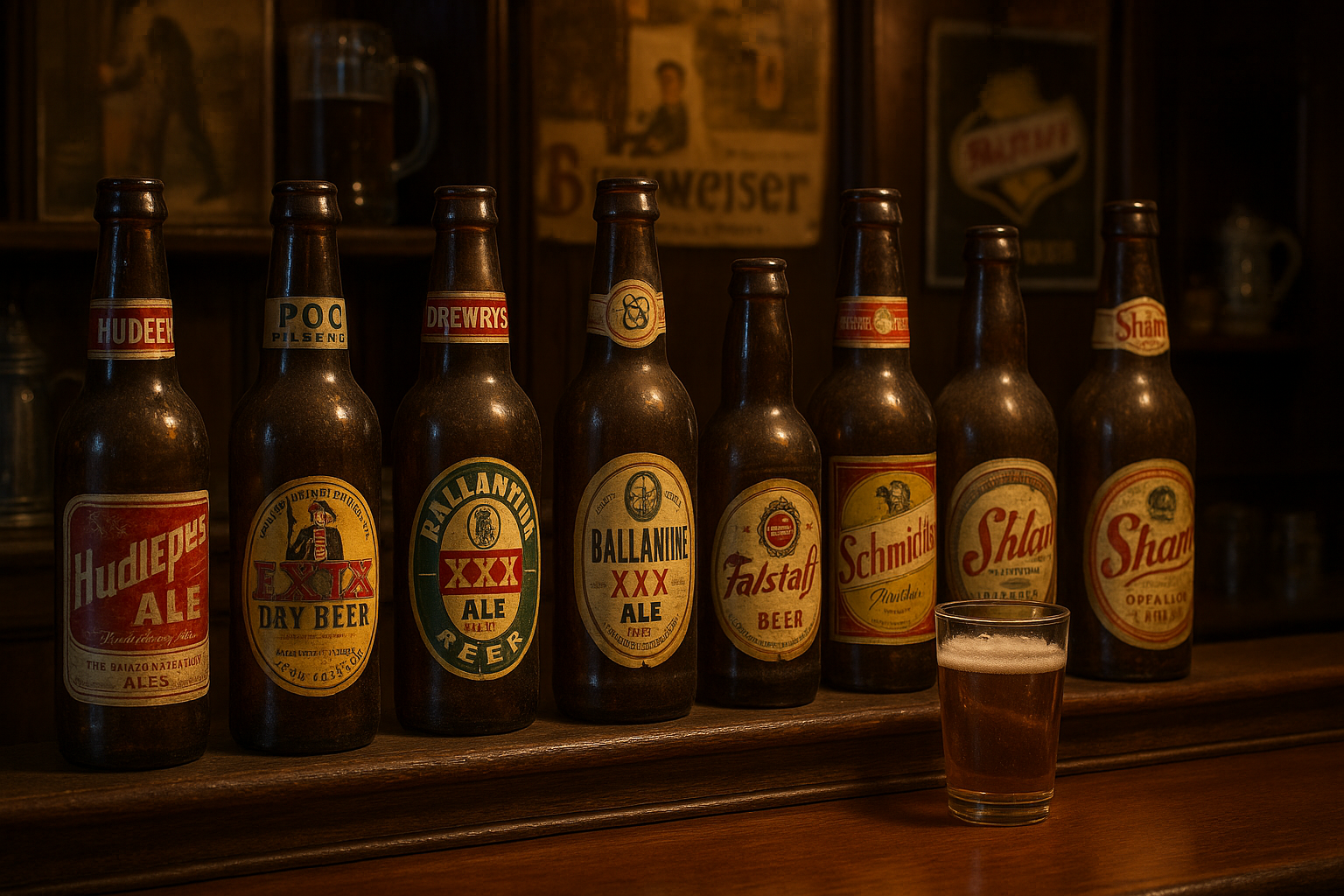In the midst of the cacophony and chaos of World War II, a silent but powerful revolution was taking place—not on the battlefields, but in the studios and workshops of graphic designers. As the world grappled with the seismic shifts brought about by war, the realm of graphic design was undergoing its own transformation, one that would eventually influence everything from consumer products to pop culture itself. The story of how WWII reshaped graphic design is a fascinating journey, bridging the gap between history and creativity, and illuminating how adversity can spark innovation.
During the war, graphic design was thrust into the spotlight as nations sought to communicate powerful messages through propaganda posters, ration books, and even military insignias. These designs weren’t just about aesthetics; they were tools of persuasion, morale-boosters, and in some cases, subtle acts of rebellion. The urgency of wartime communication demanded clarity, impact, and ingenuity, challenging designers to distill complex ideas into visual forms that could be understood at a glance. This period saw the rise of bold typography, striking color contrasts, and iconic imagery that spoke directly to the heart and soul of those who viewed them. As we’ll explore, these wartime necessities laid the groundwork for graphic design principles that continue to resonate in modern marketing and branding.
After the war, the influence of these design principles began to permeate the commercial world. Returning soldiers and citizens were eager to embrace a new era of peace and prosperity, and graphic design played a pivotal role in shaping this narrative. Advertising agencies, product manufacturers, and media outlets eagerly adopted the bold and impactful design styles honed during the war, adapting them for consumer goods and services. This transformation wasn’t merely about aesthetics; it was about creating a visual language that could evoke emotions, tell stories, and build brand identities. As we delve deeper into this topic, we’ll uncover how the lessons learned from wartime design informed the branding of iconic products, from household goods to automobiles, and even fashion.
Throughout this exploration, we’ll also examine the legacy of influential designers who emerged during and after the war. These visionaries, such as Abram Games and Paul Rand, pushed the boundaries of what graphic design could achieve, blending art with functionality in ways that were revolutionary for their time. Their work not only reflected the zeitgeist of the post-war era but also set the stage for future generations of designers. Join us as we journey from the battlefields to the billboards, discovering how WWII served as an unlikely catalyst for a graphic design renaissance that continues to shape our visual world today. 🚀
The Impact of World War II on Graphic Design
World War II was not just a military conflict that altered the geopolitical landscape; it was a transformative event that reshaped industries, cultures, and societies worldwide. Among the less obvious but profoundly affected areas was graphic design. Before the war, graphic design was primarily centered around simple advertisements and typographic expressions. The war catalyzed the evolution of graphic design, pushing it into new realms of creativity and functionality. Graphic designers were suddenly tasked with creating compelling propaganda, which required them to communicate powerful messages succinctly and effectively. This period demanded a new level of innovation and urgency from designers.
The need for effective communication during the war led to the adoption of bolder colors, more striking images, and innovative layouts that could capture attention quickly. Designers were tasked with creating posters, pamphlets, and advertisements that not only informed but inspired and mobilized the public. This requirement gave rise to a new era of design, where aesthetics were married with purpose. The influence of these designs can still be seen today in various media, from advertising to product packaging.
The shift from handcrafted methods to mass production during and after the war was another significant change. The development of new printing technologies allowed for more intricate designs and the ability to produce materials on a larger scale. This industrialization of graphic design not only made design more accessible but also laid the foundation for the global advertising industry we see today. Explore how these wartime innovations have persisted and evolved in the video below: WWII Graphic Design Innovations – Channel Name. 📺
Technological Advancements and Their Influence
One of the most significant impacts of World War II on graphic design was the technological advancements that emerged during and after the conflict. The war accelerated the development of new technologies that were quickly adapted for civilian use. For instance, the development of faster printing presses and new ink technologies allowed for more vibrant colors and quicker turnaround times. This led to an explosion of printed materials, from books to magazines, and laid the groundwork for modern-day advertising.
Moreover, the introduction of photography into design was a game-changer. Before the war, illustrations were the primary medium for graphic communication. However, wartime necessitated the use of photographs for realism and immediacy. This shift not only changed the way messages were conveyed but also led to a new aesthetic in design that valued authenticity and real-world images over fantasy. This change is evident in the post-war era’s advertising campaigns, where photographs began to dominate the visual landscape.
In addition, the war spurred the development of new materials such as plastic, which were initially used for military purposes but later found their way into consumer products. This new versatility in materials allowed designers to experiment with textures and forms, giving rise to innovative product designs that were both functional and visually appealing. To better understand these technological influences, consider the table below, which compares pre-war and post-war graphic design technologies:
| Aspect | Pre-War | Post-War |
|---|---|---|
| Printing Technology | Slow, limited color | Fast, vibrant color |
| Imagery | Illustrations | Photography |
| Materials | Paper, metal | Plastic, new inks |
The Rise of Branding and Consumerism
The post-war period marked a significant shift towards consumerism, which was closely linked with the rise of branding in graphic design. With the war over, industries that had been producing military supplies needed to pivot to consumer goods. This shift required a rebranding of products and the creation of new consumer identities. Graphic designers played a crucial role in this transformation by crafting visual identities that resonated with the burgeoning consumer culture.
Branding became more than just a logo; it was about creating a comprehensive visual language that could communicate a company’s values and appeal to a wide audience. This was a departure from pre-war advertising, which was more product-focused. Designers began to employ psychology in their work, understanding that colors, shapes, and typography could influence consumer behavior. This era saw the birth of iconic brands whose visual identities have stood the test of time.
Moreover, the post-war economic boom meant that there was more disposable income, and consumers were eager to spend on new products and experiences. This created a competitive marketplace where brands needed to stand out. Graphic design became an essential tool in differentiating products and building brand loyalty. The integration of branding into every aspect of design—from packaging to advertising—was a significant development that continues to shape the industry today.
Post-War Design Aesthetics
The aesthetics of graphic design also underwent significant changes in the post-war period. The Bauhaus movement, which had been interrupted by the war, regained influence and led to a resurgence of modernist design principles. This included a focus on simplicity, functionality, and the use of geometric shapes. The modernist aesthetic was well-suited to the new consumer culture, offering a clean and efficient visual language that communicated progress and modernity.
Additionally, the influence of American culture began to spread globally, driven by Hollywood and the rise of mass media. This led to the popularization of styles such as pop art, which celebrated consumer culture and used bold, vibrant colors and playful imagery. Designers like Andy Warhol became cultural icons, their work blurring the lines between art and commercial design.
Incorporating these design aesthetics into consumer products helped create a sense of excitement and innovation. Products were no longer just functional; they were also statements of style and identity. This shift towards design-driven consumerism has only intensified over the decades, with companies investing heavily in design to create products that are not only useful but also desirable.
The Legacy of WWII on Modern Graphic Design
World War II’s influence on graphic design was profound, and its legacy can still be seen in the industry today. The innovations and changes that emerged during and after the war laid the foundation for modern graphic design practices. From the emphasis on powerful visual communication to the integration of technology and branding, the war years set the stage for the graphic design revolution that followed.
One of the key legacies of this period is the continued importance of storytelling in design. The ability to convey a narrative through visuals was honed during the war, and it remains a critical skill for designers today. Whether creating a brand story or developing a campaign, the power of storytelling is central to effective design. This skill is increasingly important in a digital world, where visual content is consumed at a rapid pace and must be compelling to capture attention.
Furthermore, the integration of new technologies continues to drive innovation in graphic design. Just as WWII accelerated the adoption of new printing technologies, the digital age has introduced new tools and platforms for designers. The principles established during the war—innovation, adaptation, and effective communication—remain relevant as designers navigate the challenges and opportunities of the digital era.
Table of Post-War Design Influences
To better understand how WWII influenced modern graphic design, consider the table below, which outlines the primary changes in design practices that emerged during and after the war:
| Influence | WWII Impact | Modern Implications |
|---|---|---|
| Visual Communication | Emphasis on clear, impactful messaging | Central to branding and advertising |
| Technology | Adoption of new printing and photographic methods | Digital tools and platforms |
| Branding | Development of comprehensive visual identities | Integral to business strategy |
In exploring how WWII shaped graphic design, it is clear that the conflict served as a catalyst for change, driving innovation and setting the stage for the modern design industry. The lessons learned and advancements made during this period continue to influence designers today, underscoring the enduring legacy of this transformative era.

Conclusion
In conclusion, the profound impact of World War II on the evolution of graphic design in consumer products is both fascinating and far-reaching. The war served as a crucible for innovation, pushing boundaries and redefining the aesthetics and functional aspects of design. From the necessity-driven innovations on the battlefields to the explosion of consumerism in the post-war era, every facet of graphic design was touched by the experiences and lessons of the conflict.
During the war, the urgency of communication and the need for effective propaganda led to the development of striking visuals and streamlined designs. This period saw the emergence of bold typography, simplified imagery, and the strategic use of color, all aimed at capturing attention and conveying messages quickly and efficiently. These elements, originally designed for war-time posters and communications, found their way into commercial advertising and product packaging in the years that followed.
The transition from battlefields to billboards was facilitated by a growing demand for consumer goods and an optimistic economic climate. With the return to peacetime, there was a surge in the production and consumption of goods. Companies capitalized on the innovative design principles honed during the war to create compelling advertisements and packaging that appealed to a new generation of consumers. This era saw the rise of iconic brands and products, many of which are still recognized today.
Moreover, the influence of wartime design extended beyond mere aesthetics. The utilitarian approach necessitated by the war encouraged designers to focus on functionality and efficiency, principles that continued to shape product design long after the war had ended. This period marked a shift towards modernism in design, characterized by clean lines, minimalism, and a focus on usability—an ethos that continues to resonate in contemporary design.
The contributions of individuals who transitioned from wartime roles to influential positions in the design world also played a significant role in this transformation. Designers like Raymond Loewy and Paul Rand, who served in various capacities during the war, brought their experiences and innovative ideas into the commercial sphere, helping to redefine the relationship between form and function.
The legacy of World War II in graphic design is evident in the enduring principles of simplicity, clarity, and functionality that continue to dominate the field. The war’s influence is a testament to the resilience and adaptability of designers who turned the constraints of war into opportunities for creativity and innovation.
As we reflect on this remarkable period, it is important to recognize the continuing relevance of these design principles in today’s rapidly changing world. The lessons learned from wartime design challenges serve as a reminder of the power of creativity and adaptability in overcoming adversity.
We encourage readers to delve deeper into this topic, explore the works of designers influenced by this era, and consider how these principles can be applied to current design challenges. By sharing this knowledge, we can foster a greater appreciation for the history of graphic design and inspire new generations of designers to build upon this rich legacy.
Feel free to comment on your thoughts about how World War II has shaped the field of graphic design. Your insights and experiences are valuable contributions to this ongoing conversation. Also, share this article with others who might find it intriguing, and consider how these historical influences might inform your own work or interests. The journey from battlefields to billboards is a story of innovation, resilience, and creativity—let it inspire you in your own creative endeavors. ✨
For more information on the impact of World War II on graphic design, visit reputable sources such as AIGA and . These sites offer extensive resources and insights into the history and evolution of graphic design.
Toni Santos is a visual poet and botanical dreamweaver, archiving the ephemeral beauty of dreams through nature’s delicate language.
In his artistic universe, every petal, vine, and root becomes a memory—an echo from the subconscious—preserved in time like pages from an ethereal journal. Toni treats plants not just as living beings, but as dream-symbols: vessels of forgotten feelings, silent wishes, and secret stories waiting to unfold.
His work is rooted in the belief that nature holds the vocabulary of dreams. Through botanical compositions, symbolic floral creations, and enchanted visual studies, he gives form to the unseen — the moment between sleep and wakefulness, where memory fades and imagination begins.
As the visionary behind Vizovex, Toni curates collections that feel like fragments of a dreamscape: moss-filled glass jars, mythic flowers, ancient botanical symbols reimagined. These creations invite you to explore your inner worlds and reawaken your sense of wonder.
His work is a tribute to:
The dreamlike language of plants and natural symbols.
The quiet messages found in forgotten moments.
The art of recording the soul’s memories in organic form.
Whether you’re a seeker of meaning, a lover of myth, or someone who drifts between the symbolic and the real, Toni welcomes you to explore an archive of dreams — one petal, one relic, one timeless whisper at a time





